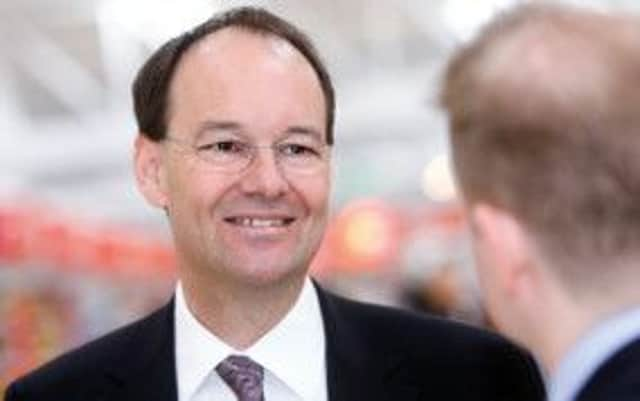Sainsbury’s struggles to stem decline


Latest figures from market researcher Kantar Worldpanel show takings at the UK’s third-largest grocer dipped 1.8 per cent in the 12 weeks to 7 December as cut-price rivals Aldi and Lidl lured more cost-conscious shoppers.
In November, chief executive Mike Coupe – who succeeded Justin King in the summer – said Sainsbury’s may have to cut its annual dividend as it racked up a loss of £290 million for the first six months of its financial year after writing down the value of land it no longer aims to develop.
Advertisement
Hide AdAdvertisement
Hide AdCoupe is the former commercial director at the retailer, which is 26 per cent owned by the Qatari Investment Authority and will be the first of the big supermarkets to deliver a festive trading update.
He has said that he expects tough conditions to continue in the sector, which is facing a “once-in-a-generation combination of cyclical and structural change”, but plans to invest £150m in price cuts and improve the quality of 3,000 own-brand products.
As consumers rein in their spending amid muted wages growth, the German duo of Aldi and Lidl have seized a record 8.6 per cent slice of the supermarket sector, which eked out overall growth of just 0.1 per cent in the 12 weeks to 7 December. Sales at Aldi soared by 22.3 per cent against a year ago, while Lidl saw an 18.3 per cent surge.
Andy Clarke, the chief executive of Asda, last week said the coming year is likely to remain challenging for the established grocers, adding: “The discounters will grow and there will be winners and losers.”
In an attempt to beat Aldi and Lidl at their own game, Sainsbury’s last year announced a surprise move to bring the Netto brand back to the UK through a joint venture with the Danish retailer’s parent, Dansk Supermarked.
The rise of the cut-price chains is also piling pressure on beleaguered market leader Tesco, which is seeking to turn its fortunes around in 2015 following a year marked by a succession of profit warnings and an accounting scandal.
Tesco’s trading statement is due on Thursday – the day after Sainsbury’s has updated the market – and is expected to unveil more falling like-for-like sales. During the key festive period chief executive Dave Lewis, appointed in September, personally took charge of the grocer’s UK operations and it is expected he will lay out his plans for the supermarket’s future in more detail, amid speculation that this may include raising cash by selling some of its non-core operations or even a rights issue.
Last month Tesco shocked the City with its fourth profit alert of the year, warning that annual trading profits “will not exceed £1.4 billion”.
Advertisement
Hide AdAdvertisement
Hide AdThe Financial Reporting Council has also launched an investigation into a £263m overstatement of profit expectations at the group, which is already being investigated by the Serious Fraud Office.
Reports have suggested that Tesco is considering a partial flotation of its Edinburgh-based banking arm as it tries to recover from the accounting error. Such a move could raise between £500m and £1bn.
Launched in 1997 as a joint venture with Royal Bank of Scotland, the grocer took full control of Tesco Bank after paying the state-backed lender £950m for its 50 per cent stake in the division in 2008.
Sainsbury’s has a banking operation based in Edinburgh, and in 2013 bought out joint venture partner Lloyds Banking Group in a £248m deal.